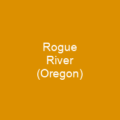Big Butte Creek: A Natural Wonder of Southern Oregon
Imagine a river that weaves through time, carrying with it stories of ancient tribes, bustling towns, and vibrant ecosystems. That’s Big Butte Creek, a 12-mile-long tributary of the Rogue River in Oregon.
The Watershed’s History
How long has this land been home to life? Over 8,000 years ago, Native American tribes like the Klamath, Upper Umpqua, Takelma, and Latgawa called Big Butte Creek their home. They thrived here for millennia until they were driven out in the Rogue River Wars of the 1850s.
Non-indigenous settlers arrived in the 1860s, bringing with them industries such as agriculture and logging. The city of Butte Falls, incorporated in 1911, remains the only town within the watershed’s boundaries today. This area has seen a lot of change over time, but its natural beauty endures.
Nature’s Bounty: Trout, Salmon, and More
Big Butte Creek is more than just a river; it’s an ecosystem teeming with life. The creek supports several species of trout and salmon, providing a home for numerous plants and animals. A portion of the watershed was designated as an Area of Critical Environmental Concern in 1995 to protect rare plant species like Howell’s yampah and Egg Lake monkeyflower.
Over 152 bird species call this area their home, including the northern goshawk and the northern spotted owl. Amphibians such as the Oregon spotted frog and the Cascades frog also thrive here. Mammals like black-tailed deer, Roosevelt elk, cougars, and black bears are common, while fishers and American martens have been spotted too.
Water Resources and Management
Big Butte Springs provide clean drinking water to over 115,000 residents, emitting more than 26 million US gallons of water per day. The creek’s discharge is monitored at three gauges, ensuring that the watershed drains approximately 245 square miles with a Mediterranean climate and high precipitation.
Earthflows are common due to the rock’s ability to absorb moisture, especially in the High Cascade region where Mount McLoughlin stands as the most prominent volcano. The creek travels northwest, gathering tributaries before cascading over Crowfoot Falls and emptying into the Rogue River 155 miles from its mouth.
Human Impact and Conservation
The history of Big Butte Creek is intertwined with human activity. A sawmill was built at Butte Falls in 1904, and irrigation canals were constructed to support agriculture. The Medford Aqueduct was built in 1927 to deliver drinking water from Big Butte Springs.
Reforestation efforts began in the 1940s due to over-logging, but a major storm in 1962 left only about five percent of old-growth forest remaining. The Poverty Flats region was designated an Area of Critical Environmental Concern in 1995 for its rare plant species and fenced off in 1996 to protect the area from roaming cattle.
The Butte Falls Fish Hatchery operated until October 2010, while a portion of the Eagle Point Irrigation Canal failed on October 2, 2011, sending muddy water into lower Big Butte Creek. The canal was repaired by October 28, ensuring that the creek continues to flow smoothly.
Water Quality and Recreational Activities
The Oregon Department of Environmental Quality monitors Big Butte Creek for eight parameters affecting water quality. About 54.2 miles of streams were listed on the DEQ 303d list in 2004/2006, with high temperatures and turbidity levels reported.
Despite these challenges, water quality in the watershed is generally high, except for areas affected by road construction and logging. The Willow Creek region often experiences high turbidity, but Willow Lake traps sediment before it can travel downstream. Popular recreational activities include hunting, camping, hiking, horseback riding, sight-seeing, boating, swimming, fishing, and waterskiing on Willow Lake.

Big Butte Creek is a testament to the resilience of nature and the importance of conservation. It’s not just a river; it’s a lifeline for countless species, a source of clean water, and a place where humans can connect with the natural world. As we continue to navigate the challenges of development and environmental change, let us remember that every drop in Big Butte Creek matters.
You want to know more about Big Butte Creek?
This page is based on the article Big Butte Creek published in Wikipedia (retrieved on December 2, 2024) and was automatically summarized using artificial intelligence.







